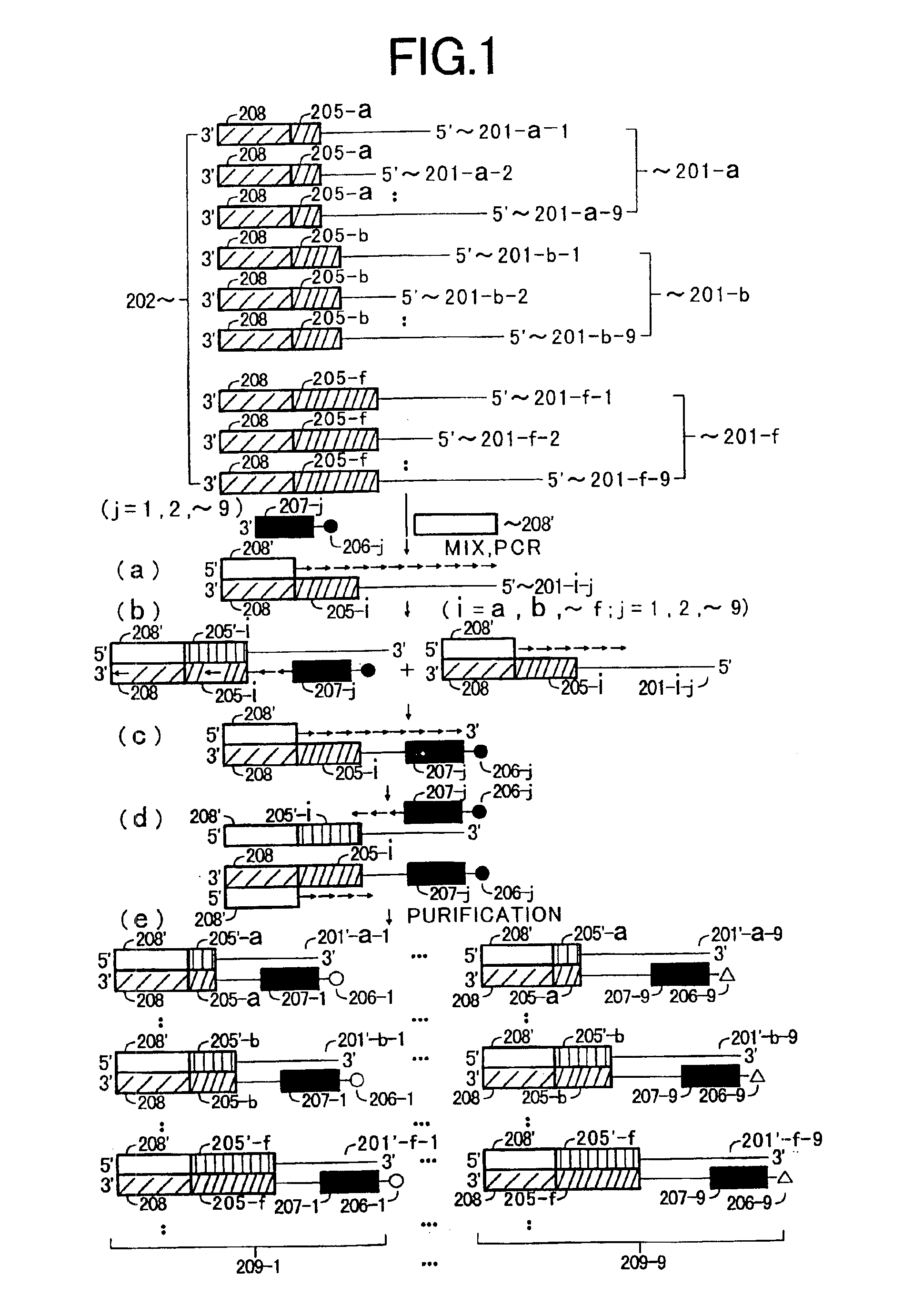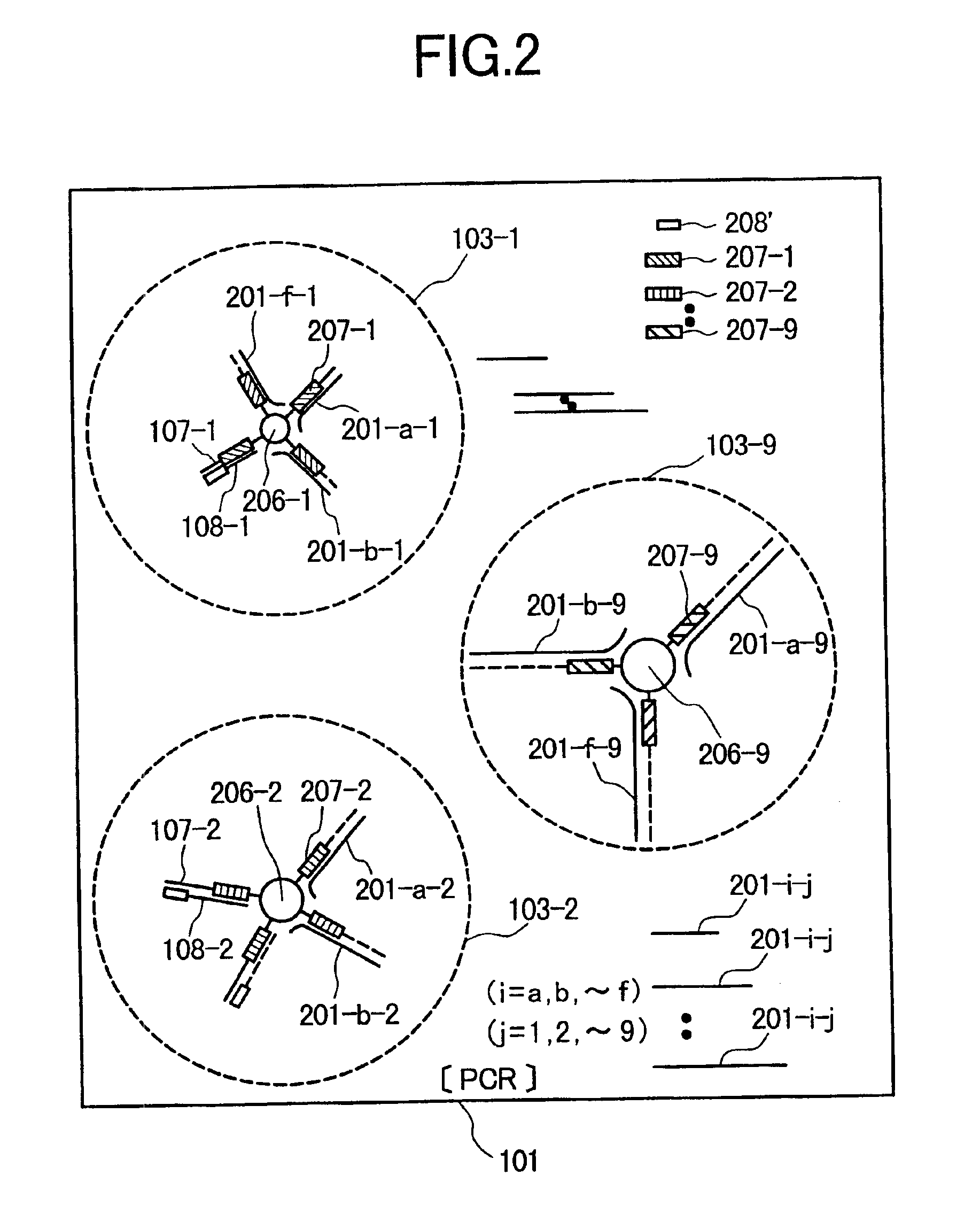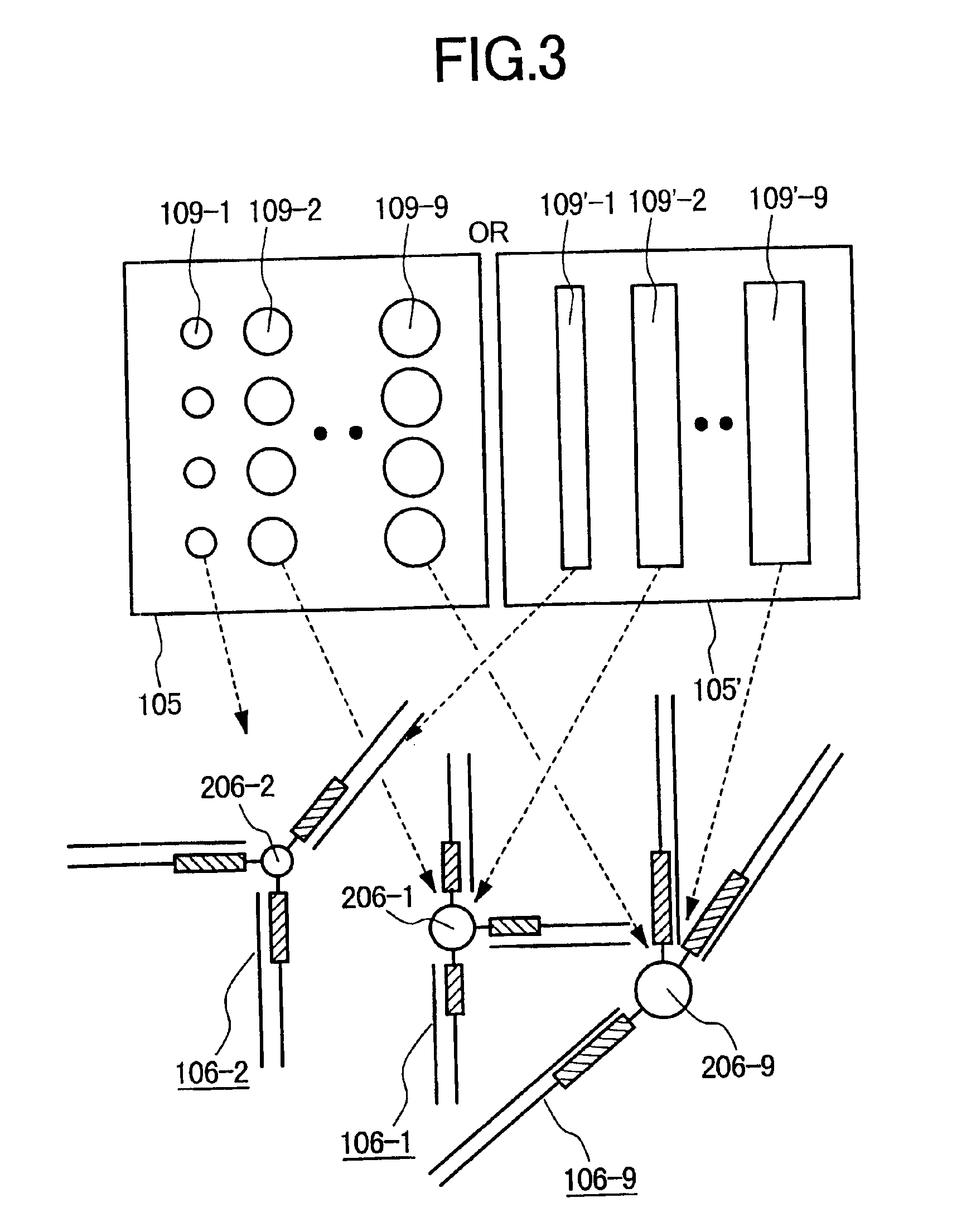Sample preparation method and a sample preparation apparatus for DNA analysis
a sample preparation and sample technology, applied in the field of dna comparative analysis, can solve the problems of difficult and accurate comparative analysis, high labor intensity and troublesome analysis, and produce unwanted products
- Summary
- Abstract
- Description
- Claims
- Application Information
AI Technical Summary
Benefits of technology
Problems solved by technology
Method used
Image
Examples
example 1
[0069]Example 1 is a case where different DNA probes (primers) are immobilized on different beads, respectively, and various target DNA fragments are amplified by PCR in distinction from one another, and the amplified products are held on the beads and then separately collected.
[0070]In Example 1, a method is explained which comprises immobilizing specific probes (specific primers) 207-j (j=1, 2, ˜, 9) capable of hybridizing specifically with a plurality of target DNA fragment species 201-i-j (i=a, b, ˜, f; j=1, 2, ˜, 9), respectively, in each of a plurality of DNA sample-i (i=a, b, ˜, f) on the surfaces of fine particles or beads 206-j (j=1, 2, ˜, 9) having different diameters for the different target DNA fragment species; and dispersing the fine particles or beads in a reaction solution to carry out PCR amplification of the plurality of the target DNA fragment species 201-i-j (i=a, b, ˜, f; j=1, 2, ˜, 9) in each of the plurality of the DNA samples-i (i=a, b, ˜, f) by using each of...
example 2
[0099]In Example 1, the fine particles or beads (or the fibers) are placed together in one reaction vessel irrespective of the kinds of the immobilized specific primers. In Example 2, a capillary is used as a reaction vessel, fine particles or beads are held in the capillary so as to be located in different places on the basis of the kinds of specific primers (probes) immobilized on the surfaces of the fine particles or beads, and PCR is carried out by the use of the specific primers spatially separated on the basis of their kinds.
[0100]In this method, mutual interference by specific primers is prevented and the PCR products are present only in the vicinity of the fine particles or beads immobilizing the corresponding specific primers. Therefore, efficient multicomponent PCR can be carried out.
[0101]FIG. 5 is a diagram illustrating Example 2. In Example 2, fine particles or beads immobilizing specific primers are held in a capillary so as to be located in different places on the bas...
example 3
[0108]Example 3 is a method in which fine particles or beads, which have specific probes immobilized on their surfaces, are placed in the cells (hole-like reaction portions) of a holder 302 mutually isolated so as to separate the fine particles or beads on the basis of their kinds, and a mixture of a reaction solution and template DNAs are fed as a common reaction solution from a reaction-solution-holding plate 303. The common reaction solution can pass through the cells.
[0109]FIG. 6 is a perspective view showing the structure of a reaction device having lineary arrayed holes as reaction portions for holding specific probes so as to separate them on the basis of their kinds, in Example 3. In the reaction device shown in FIG. 6, specific primers which have sequences complementary to a plurality of target DNA fragment species to be amplified, respectively, and hybridize specifically with the target DNA fragment species, respectively, are held in the holes of a holder 302 having a plur...
PUM
| Property | Measurement | Unit |
|---|---|---|
| diameters | aaaaa | aaaaa |
| diameter | aaaaa | aaaaa |
| diameter | aaaaa | aaaaa |
Abstract
Description
Claims
Application Information
 Login to view more
Login to view more - R&D Engineer
- R&D Manager
- IP Professional
- Industry Leading Data Capabilities
- Powerful AI technology
- Patent DNA Extraction
Browse by: Latest US Patents, China's latest patents, Technical Efficacy Thesaurus, Application Domain, Technology Topic.
© 2024 PatSnap. All rights reserved.Legal|Privacy policy|Modern Slavery Act Transparency Statement|Sitemap



